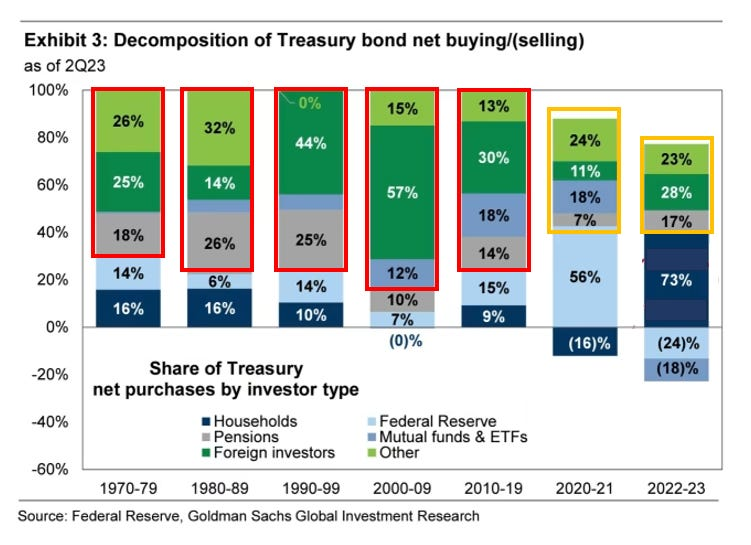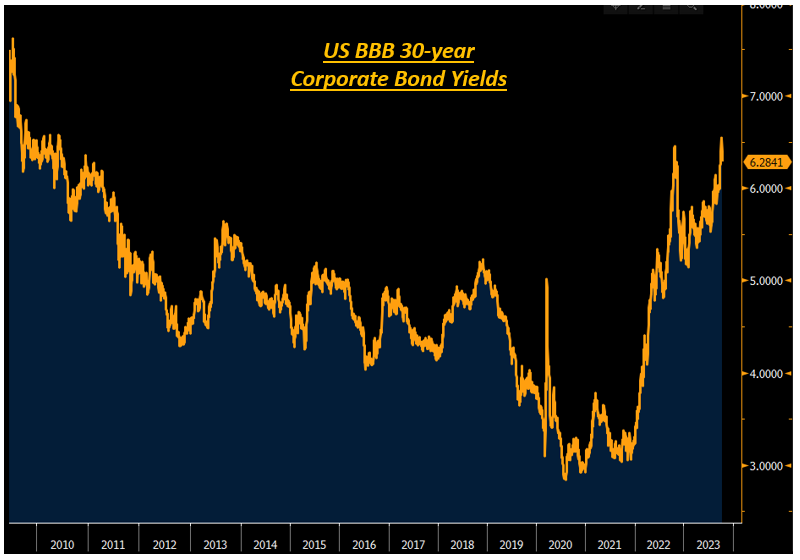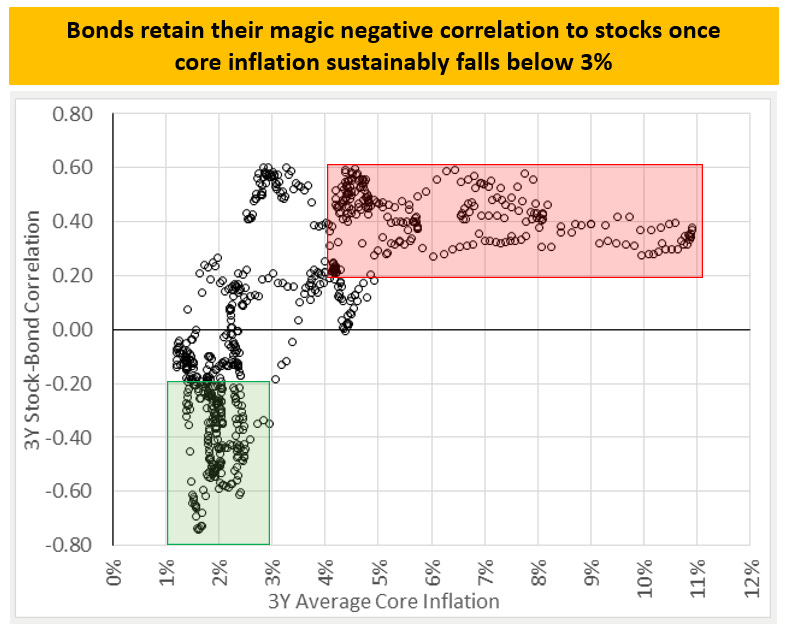Who are the biggest whales in the bond market?
If you go around and ask this question, most people would tell you that’s either the Fed or foreign Central Banks like the Bank of Japan or the People’s Bank of China.
That’s wrong.
And the real bond market whales might develop a renewed appetite for bonds in 2024.

The chart above speaks more than 1,000 words: history shows (red boxes) how 70%+ of net buying flows in Treasury markets are attributable to pension funds, asset managers, insurance companies, and foreign investors.
These foreign investors include both institutional players (the very same pension funds, asset managers, etc) and foreign Central Banks.
I estimate that foreign Central Banks account for about 1/3 of the flows in the dark green stack.
That leaves us with ~60% of the buying flows attributable to the real whales: pension funds, asset managers, banks, and insurance companies.
Not the Fed.
The Fed played an outsized role only in 2020-2021, but that’s an exception attributable to the huge pandemic-related QE programmes.
Recently most of the buying flows have been coming from households: 4-5% risk-free rates have become a palatable investment alternative for the first time in decades.
A caveat here as well: this definition of ‘‘households’’ also includes hedge funds, so take it with a pinch of salt.
My point remains: the biggest whales in the bond market are banks, pension funds, asset managers, and insurance companies.
The big question is: why do they buy bonds in the first place?
1. Their guaranteed (real) yields are high enough to help them meet their return objectives and simultaneously hedge interest rate risk. 
Insurance companies and pension funds run long-duration liabilities like life insurances or pension contributions to be paid in 30-40 years.
It’s good practice to immunize the interest rate risk from these long liabilities with long-duration assets: 30-year bonds, for example.
On top of it, these industries have to achieve long-term return targets of (at least) 6-7% to remain viable over the long term.
Today they can pretty much achieve both objectives by buying 30-year BBB corporate bonds: that’s a very solid proposition for these whales.
2. Bonds (can) act as a portfolio stabilizer when risk assets take a hit

This chart from the excellent Dan Rasmussen of Verdad Capital is key.
Going back almost 200 years, it’s quite evident that the stock/bond correlation isn’t negative all the time: it’s often positive (!) especially if core inflation is above 3% and particularly volatile (2022 anybody?).
That makes sense: if core inflation is high and unpredictable, Central Banks will go a long way to tighten aggressively and get things under control again.
Central Bankers rule #1 is to preserve credibility and therefore be able to retain control of the game.
As they tighten aggressively, bond markets will sell off and equity valuations will simultaneously take a hit: positive correlation, and poor stock/bond returns.
Instead, bonds retain their amazing negative correlation to stocks only if core inflation falls predictably below 3% (green area).
And that makes sense too: once core inflation is within the Central Bank's comfort zone, the big drawdown in equities or credit markets will be seen as destabilizing for the economy, and Central Banks will attach more value to their growth/labor market side of the mandate and come to the rescue.
If things get bad, bond markets will rally in anticipation of Central Bank easing: this is the negative stock/bond correlation institutional investors love so much.
Conclusion
Today core inflation is at 4% with the 6-month underlying trend hitting 3% already.
History shows that below 3% the sought-after negative correlation between stocks and bonds might unfold once again.
If that happens, bonds will be a very palatable asset for hungry whale buyers.
The combination of a long-duration asset that immunizes interest rate risk, delivers a high yield and protects portfolios in an equity drawdown is an irresistible proposition for this big bond market whales.
These whales have been dormant, but their footprint can be enormous and much bigger than the Fed.
Beware the stock/bond market correlation and the bond market whales.
Disclaimer: This article was originally published on The Macro Compass. Come join this vibrant community of macro investors, asset allocators and hedge funds - check out which subscription tier suits you the most using this link.
